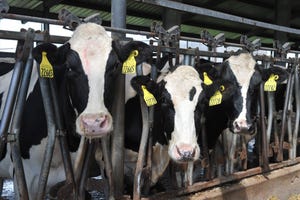Globally, food prices more affordable
FAO food price index declines in January, cereal output primed for record

Robust cereal inventories, strong U.S. dollar and weak crude oil prices drove global food prices downward in January, reported the Food and Agriculture Organization of the United Nations (FAO).
As the trade-weighted index that tracks prices of five major commodities, the FAO Food Price Index averaged 182.7 in January, down 1.9% from the previous month.
On the whole, all five sub-indices last month either declined or remained unchanged as a reflection from ample supplies and world economic conditions.
For the most part an abundant export availability of pork and falling currency exchange rates in relationship to the U.S. dollar accounted for the 1.6% decline in the January FAO meat price index, which averaged 194.3 points.
Falling prices for cheese and skimmed milk powder counterbalanced the rise in butter price to leave the FAO dairy price index flat in January at 173.8 points. Worthy to note, world milk supplies will soften in the months to come as dry weather in Oceania and attempt to avoid going over quota in EU will keep production at a lower level.
Similar, the sugar price index was virtually unchanged at 217.7 points in January whereas the vegetable oil index fell significantly to 156 points to the lowest level since October 2009, 2.9% below December’s level.
Moreover, the FAO cereal price index averaged 177.4 points in January, down 3.6% from December as result of 7% reduction in international wheat prices while coarse grains and rice subsided by only 1% or less. The cereal price index has fallen to its lowest since July 2010 and is now as much as 90 points below its peak in June 2008.
Meanwhile, the latest FAO cereal supply and demand report recorded world cereal production for 2014 at a record breaking 2,543 million tons. Early indications are favorable for 2015 crop production with satisfactory reports for winter wheat and southern hemisphere corn planting.
Globally, 1,104 million tons of cereals will be used for food consumption, up 1.1% from the previous year.
World cereal stocks in 2015 are forecast at around 623 million tons, up 8 percent from a year earlier. Inventories of wheat and maize are anticipated to grow, while those for rice are poised to drop by about 4 million tons in 2015, with notable reductions in India, Indonesia and Thailand.
Consequently, the global cereal stock-to-use ratio for 2014-2015 will rise to its highest level in more than a decade and well above the historic low of 18.4% recorded in 2007-2008.
About the Author(s)
You May Also Like



